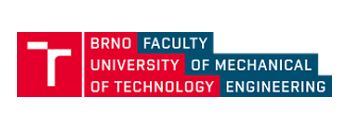


Modeling of Underground Thermal Energy Storage Unit Coupled with Sun-tracked PVT and Solar Collectors
by Paweł Ocłoń
ABSTRACT
This lecture presents a building heating system based solely on renewable energy sources. Considering that the construction industry is responsible for about 38% of greenhouse gas emissions in Poland, it is necessary to look for innovative heating systems to reduce this effect. Most particulate pollutants are emitted by boilers fired with solid fuels. The energy standard of most residential buildings is much lower than the 2021 target level. One of the methods to reduce greenhouse gas emissions is advanced retrofit of buildings, which makes it possible to reduce energy consumption by about 30-80%. However, not every building can be modernized. For this reason, this work aims to present an advanced system of building heating which is scalable and can be applied to residential buildings demonstrating both high and low energy standards.
EU directives require the member states to increase the share of Renewable Energy Sources in the total energy mix (e.g. Directive 2009/28/EC, 2001/77/EC and 2003/30/EC). According to the European Energy Policy, in 2020 the EU has to achieve a 20% share of RES in the final consumption of energy. For Poland this limit was set at 15%. In 2007 it was also decided that by 2020 the annual energy consumption of the European Union must be reduced by 20%. Therefore, actions aimed at ensuring energy efficiency are increasingly recognized not only as a measure to ensure sustainable energy supply, reduce greenhouse gas emissions, increase security of supply and reduce expenditure on energy imports, but also as a measure to promote competitiveness of European economies.
As a consequence of actions aiming to reduce the consumption of energy in European economies, through the introduction of the EU Directive 2010/31/EU, it is assumed that from the end of 2020 all newly constructed single-family houses and larger residential and public buildings built in the EU member states should be characterized by low, almost zero demand for thermal energy. This means that low-energy houses, including passive buildings, will become increasingly popular. What is more, after 2020, only passive buildings will obtain a building permit with the EU support. Due to Polish climatic conditions, it is difficult to achieve energy parameters below the required 15 kWh/(m2/year), as stipulated by EU recommendations.
The main disadvantage of passive buildings is their price. The cost of constructing such a building in Poland can be up to 35% higher compared to a traditional house (in Germany, the cost of constructing a passive house is about 10% higher than of a traditional one). Also the materials, windows for example, are expensive and the price of an individual design of such a house, which should be adjusted to the plot, is high. Another disadvantage is the limited choice when it comes to the aesthetic qualities of the building itself and of the yard. Passive houses typically have a simple shape (no terraces, protruding rooms, multi hipped roofs, etc.), which does not always meet the taste and needs of the investor.
High energy efficiency of buildings can be achieved through advanced retrofit, which significantly reduces the cost of the building heating, or by using advanced zero-emission systems based on renewable energy sources. In order for residential buildings to comply with EU directives and meet the objectives of the climate and energy package, it is necessary to significantly increase the share of RES in building heating supply systems. Implementation of RES-based heating systems is particularly desirable in the case of older residential buildings with low energy standards. The implementation is particularly important to reduce GHG footprint, and provide primary energy savings for low energy standard residential buildings.
This lecture presents a proposal for a system based on heat pumps, photovoltaic (PV) cells and solar collectors fitted with a sun-tracking mechanism. The system also includes a heat accumulation unit located in the ground. The system is scalable and can be applied to different types of residential buildings, but it is dedicated to multi-family housing. The system works very well in new buildings with underfloor heating, but it still has to be implemented and refined to achieve high energy efficiency for residential buildings with low energy standards. Within the project funded under the Horizon 2020 programme RESHeat – Renewable energy system for residential building heating and electricity production, coordinated by the author of this monograph, the system will be implemented for multi-family buildings in Krakow, Limanowa and Palombara Sabrina (Italy) in two different climatic zones. The Basics of Modeling and Optimization of the underground Thermal Energy storage Unit will be presented.
